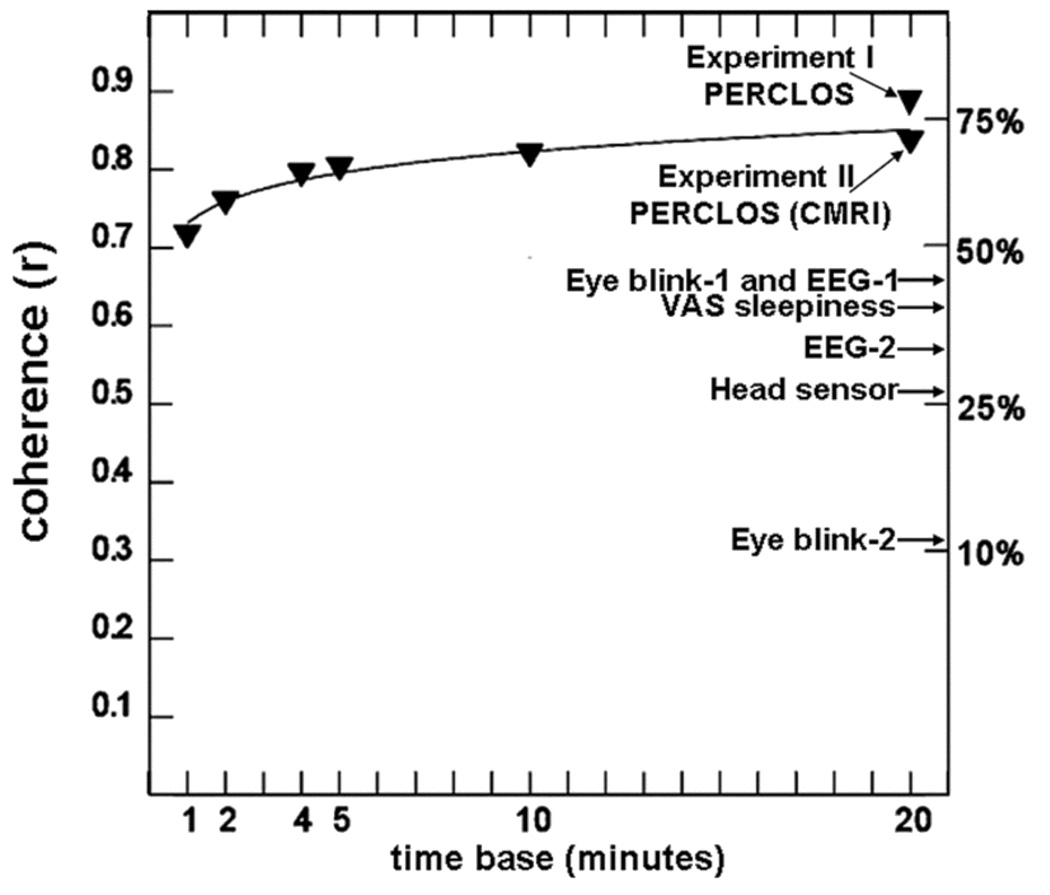Figure 2.
Mean percent time of slow eyelid closures (PERCLOS) coherence for PVT lapse frequency across 42h of waking (triangles), as a function of the time base used to define an epoch. A distance-weighted least squares function was fit to the data. PERCLOS was measured by a human scoring videos of slow eyelid closures (Experiment 1) and by infrared retinal reflectance (Experiment 2, CMRL). In both experiments it had much higher coherence with PVT performance lapses of attention (i.e., high sensitivity to behavioral alertness) than any other technology evaluated in the experiments (i.e., two different EEG algorithms [EEG-1, EEG-2), two different eye blink technologies [Eye blink-1, Eye blink-2], and head movement sensor technology [Head sensor]). PERCLOS was also a better predictor of alertness than subjects’ self-reports of sleepiness by a visual analogue scale (i.e., VAS sleepiness). The accuracy of PERCLOS predictions of PVT performance increased as the time base for integrated assessments increased from 1 to 20 minutes. More recent work also supports the accuracy of PERCLOS for unobtrusive detection of sleepiness while performing a behavioral maintenance of wakefulness test 70 and the PVT 71. Figure reprinted from Dinges and colleagues.16, 67.

